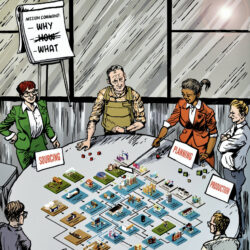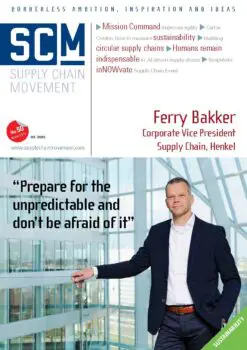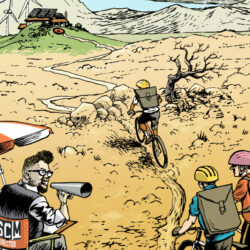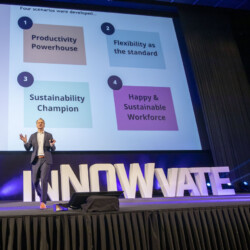Mission Command improves supply chain agility and resilience

Due to increasing uncertainty and unpredictability, supply chains require a new type of leadership. At Supply Chain Media’s inNOWvate Supply Chain Event, it became apparent that the military is an example of how that leadership could look. It starts with defining a clear-cut mission, creating a framework and ensuring the conditions are clear. And then you give your people the freedom to decide how to achieve the objectives within that framework.
The term Blitzkrieg refers to the meteoric advance of the German army at the start of World War II. According to Mart de Kruif, a former commander of NATO forces in Afghanistan, we should forget that term as soon as possible. “There was no such thing as the Blitzkrieg. The battle wasn’t won by German tanks or planes, but by German leadership.”
In his keynote at the inNOWvate Supply Chain Event in the Dutch city of Ede on 11 May, De Kruif explained his statement to a captivated audience. He talked about how the leaders of the German army analysed the reasons for the nation’s defeat in World War I. They observed that all the offensive actions had failed – not only their own, but also those of their enemies. “They decided that it was due to the use of centralized commanders who told their people precisely what to do, why to do it and how to do it. Whenever the situation changed, the people on the battlefield had to go all the way back up the chain of command to ask for new orders. As a result, there was no flexibility, no agility.”
The German commanders decided to do things differently from then on. They would still tell their people what to do and why, but no longer how to do it; that was up to the people themselves. “The creativity and flexibility of a single general can never be as great as the creativity and flexibility of the ten thousand soldiers under his command,” explained De Kruif.
The Germans called this approach Auftragstaktik, which was subsequently translated into English as ‘Mission Command’. “Even in the war in Ukraine, the real difference between the Russian and Ukrainian military is not due to the number of soldiers or tanks and planes, but due to the leadership and use of Mission Command. Because even if all communication lines are down, the commander of a Ukrainian platoon still knows exactly what to do.” … … …
Want to read more?

Get your digital subscription of Supply Chain Movement No. 50 Q3, 2023 now! >>










